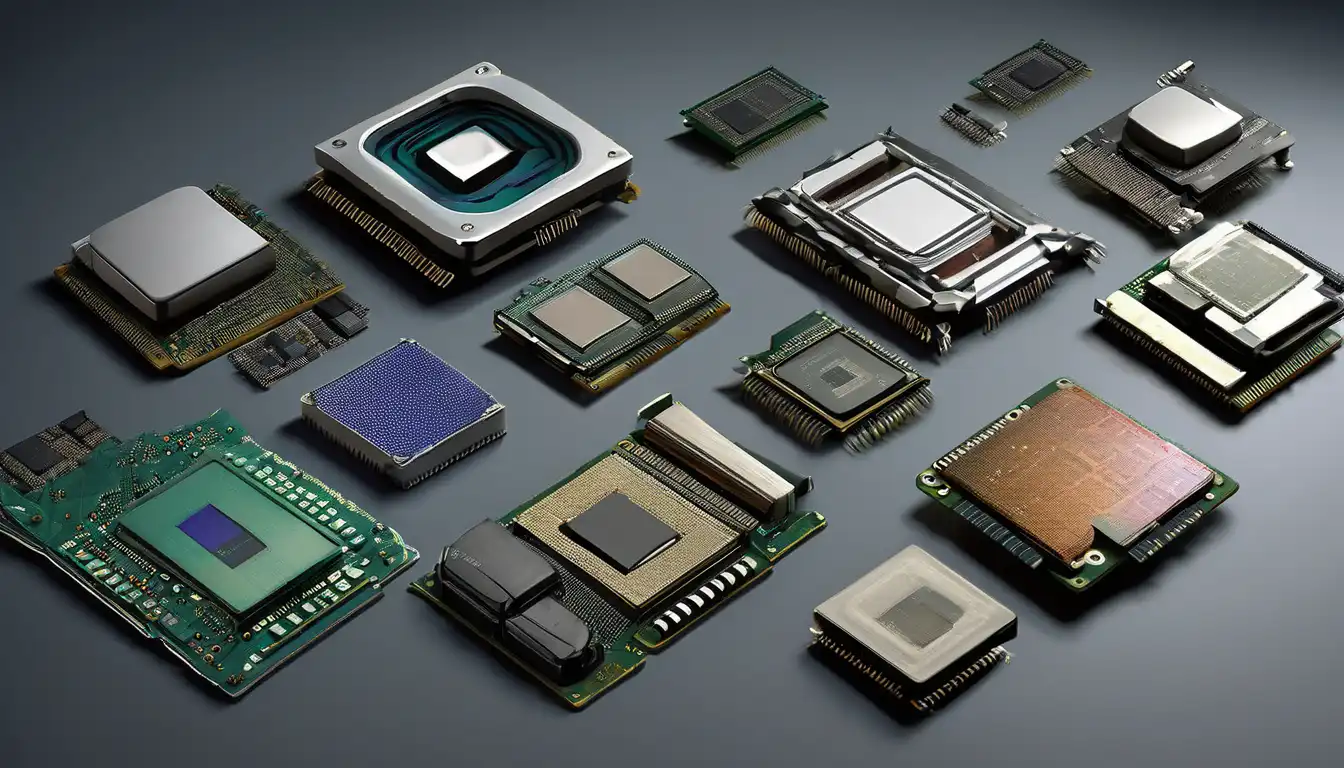The Dawn of Computing: Early Processor Technologies
The evolution of computer processors represents one of the most remarkable technological journeys in human history. Beginning with massive vacuum tube systems that occupied entire rooms, processors have transformed into microscopic marvels capable of billions of calculations per second. This transformation didn't happen overnight—it unfolded through decades of innovation, each breakthrough building upon the last to create the powerful computing devices we rely on today.
The Vacuum Tube Era (1940s-1950s)
The first electronic computers used vacuum tubes as their primary processing components. These early processors, such as those in the ENIAC (Electronic Numerical Integrator and Computer), contained approximately 17,000 vacuum tubes and weighed over 30 tons. Despite their massive size, these processors operated at speeds measured in kilohertz, performing basic calculations that would take humans hours or days to complete. The limitations were significant—vacuum tubes generated enormous amounts of heat, consumed substantial power, and had relatively short lifespans.
Transistor Revolution (1950s-1960s)
The invention of the transistor in 1947 marked a pivotal moment in processor evolution. Transistors were smaller, more reliable, and consumed far less power than vacuum tubes. By the late 1950s, computers began incorporating transistors, leading to the development of second-generation computers that were more compact and efficient. The IBM 1401, introduced in 1959, exemplified this transition, using transistor-based processors that significantly improved processing speed and reliability while reducing size and power requirements.
The Integrated Circuit Breakthrough
The next major leap came with the development of integrated circuits (ICs) in the late 1950s. Jack Kilby and Robert Noyce independently developed methods for integrating multiple transistors onto a single semiconductor chip, laying the foundation for modern microprocessor technology.
Early Integrated Circuits (1960s)
Early ICs contained only a few transistors, but their potential was immediately recognized. The Apollo Guidance Computer, used in NASA's moon missions, demonstrated the reliability of integrated circuits in critical applications. These early chips paved the way for more complex designs and set the stage for the microprocessor revolution that would follow.
The First Microprocessors (1970s)
Intel's 4004 microprocessor, introduced in 1971, marked the beginning of the modern processor era. This 4-bit processor contained 2,300 transistors and operated at 740 kHz—modest by today's standards but revolutionary at the time. The success of the 4004 led to more powerful processors like the 8-bit Intel 8080 and Motorola 6800, which powered the first personal computers and established the foundation for the home computing revolution.
The Personal Computer Revolution
The 1980s witnessed an explosion in processor development driven by the growing personal computer market. This era saw intense competition and rapid innovation as manufacturers raced to produce more powerful and affordable processors.
16-bit and 32-bit Processors
The transition to 16-bit processors like the Intel 8086 and 32-bit processors such as the Intel 80386 brought significant performance improvements. These processors introduced features like protected mode operation, virtual memory support, and higher clock speeds. The competition between Intel and emerging competitors like AMD fueled rapid advancement, with each new generation offering substantial performance gains.
RISC Architecture Emergence
While complex instruction set computing (CISC) architectures dominated the personal computer market, reduced instruction set computing (RISC) architectures gained prominence in workstations and servers. Processors like the MIPS R2000 and Sun SPARC demonstrated that simpler instruction sets could achieve higher performance through optimized execution pipelines.
The Modern Processor Era
The late 1990s and early 2000s brought unprecedented advances in processor technology, driven by Moore's Law and intense market competition.
GHz Race and Multi-Core Revolution
The pursuit of higher clock speeds culminated in the "GHz race" of the early 2000s, with processors breaking the 1 GHz barrier and eventually reaching 3 GHz and beyond. However, physical limitations and power consumption concerns led to a paradigm shift toward multi-core designs. Instead of increasing clock speeds, manufacturers began integrating multiple processor cores on a single chip, enabling parallel processing and more efficient performance scaling.
64-bit Computing and Advanced Architectures
The transition to 64-bit computing represented another major milestone, allowing processors to address larger amounts of memory and handle more complex calculations. Modern processors incorporate sophisticated features like simultaneous multithreading, advanced caching hierarchies, and integrated graphics processing units (GPUs).
Current Trends and Future Directions
Today's processor evolution continues at an accelerated pace, with several key trends shaping the future of computing technology.
Artificial Intelligence Integration
Modern processors increasingly incorporate specialized AI acceleration units, such as tensor processing units (TPUs) and neural processing units (NPUs). These dedicated components optimize machine learning workloads and enable on-device AI processing, reducing reliance on cloud-based services.
Heterogeneous Computing
The trend toward heterogeneous computing involves integrating different types of processing units on a single chip. System-on-chip (SoC) designs combine CPU cores with GPUs, NPUs, and other specialized processors to create highly efficient computing platforms optimized for specific workloads.
Quantum Computing and Beyond
While still in early stages, quantum computing represents the next frontier in processor evolution. Quantum processors operate on fundamentally different principles than classical processors, potentially offering exponential speedups for certain types of calculations. Research continues into making quantum computing practical for broader applications.
The Impact of Processor Evolution
The evolution of computer processors has transformed nearly every aspect of modern life. From enabling global communication networks to powering scientific research and driving economic growth, processors have become essential infrastructure. The continuous improvement in processing power has made possible applications that were once science fiction, including real-time language translation, autonomous vehicles, and personalized medicine.
As we look to the future, the evolution of computer processors shows no signs of slowing. Innovations in materials science, such as graphene and carbon nanotubes, may enable entirely new computing paradigms. Neuromorphic computing, which mimics the structure and function of the human brain, represents another promising direction. Whatever form future processors take, their evolution will continue to shape human progress for generations to come.
